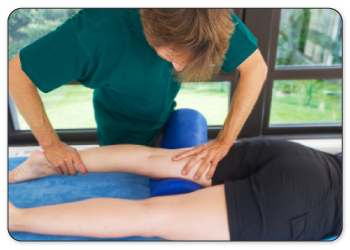 | Ice vs Heat for Treating Your Knee Injury When dealing with a knee injury it's hard to know what treatment will work best for you. You might be wondering if ice and heat will work for you. Or maybe even which will work better - ice OR heat. Icing and heating are 2 of the most natural treatment options available. Compared to medications, surgery and other treatment methods - icing and heating have been around for centuries and have always been used for knee injury healing as a means to soothe and heal. We understand that it can get pretty confusing to figure out what conservative treatment method will work best with all of the treatment options available to you today. To get started, you should think about the benefits you'll get from using these therapies. What's Better to Treat Your Knee: Ice or Heat?Ice and heat are the best treatment combination for you if: 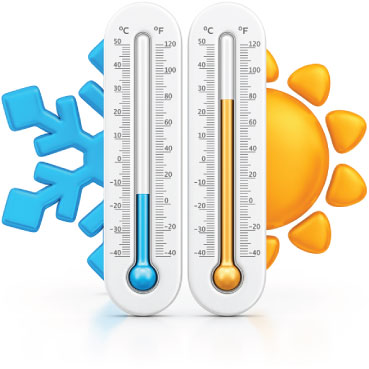
How to Use Superior Temperature Treatments to Heal & Relieve Pain from Your Knee Injury! Combining cold and warmth is a simple yet effective way to get immediate pain relief and promote long-term healing. In your lifetime you've probably had your mom, family doctor, nurse, surgeon or physical therapist tell you to use ice right after you're injured and something warm from time to time once the swelling's gone down. It's a simple yet very effective way to relieve pain and promote healing in your knee. Knee injuries can happen to anyone, right now there are thousands of doctors and physical therapists dealing with patients that require a solution to treat their knee injury fast and heal it (where possible). If you want to be proactive about properly dealing with your knee pain, speak to your doctor about adding conservative temperature treatments to your recovery with MendMyKnee's system using a Cold Compress or Ice Pack and Circulation Boost with a Knee TShellz Wrap®. The MendMyKnee At-Home Temperature Therapy Healing System Gives You:
These tools will help you achieve long-term healing results and prevent re-injury.Both Hot & Cold Treatments are ImportantPeople get confused with how ice and heat work to relieve pain and heal. They also get confused with which temperature treatment is better for their injury and how to get the right amount of "ice" or "heat" for effective treatment. When it comes to using ice and heat for treating knee injuries, it's important to keep in mind that both ice AND heat are very effective ways to relieve pain and heal. Most people will think one is better over the other from their own experience or what a doctor / physical therapist has previously told them. The only difference between using ice and heat is that 1 is better for you at a specific time in your healing cycle. Ice is used first, right when you get your injury, to decrease pain / swelling and inflammation. Heat comes later, to increase blood flow circulation and stimulate the body's healing response. 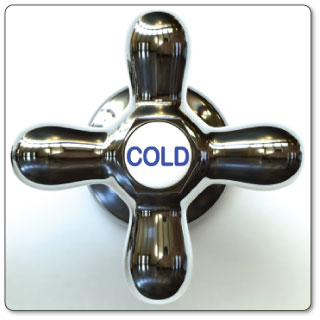 So which is better? They'll ultimately work for you in the same way. Each temperature has its own unique benefits for your knee, and when used togther they provide a powerful advantage to long-term healing. You may already know that ice or heat feels better on your knee, and this could influence your decision too. The bottom line is that ice and heat are exceptional, natural, pain relievers and healers for your knee injury. There are cases where some injuries will respond better to 1 temperature over the other. We want to help clear up the confusion so you know which is better (icy cold or gentle heat) and how to get the most from your treatment at home. How Do You Use Ice / Cold as Pain Relief for Your Knee Injury?COLD (ice) is used to treat injuries or conditions that are red, hot, inflamed, swollen and suffering from tissue damage (a tear or recovering from surgery). Cold therapy is a natural / organic pain reliever that numbs pain right at the source of your injury. While doing this, the cold also stops tissue break-down and reduces the amount of scar tissue forming (this is very important after surgery). Cold can Make Your Knee Injury Worse - How? Applying cold can restrict blood flow and stiffen / tighten soft tissue. Cold is NOT a good treatment method for your knee when the tissue is already tight and constricted, because the cold will just stiffen the tissue further. If you feel you have contricted or tight tissue, you should use a therapy that will increase blood flow instead - like Circulation Boost (Circulatory Boost). Increasing blood flow at this time will help to relieve any tightness or stiffness. Circulatory Boost used at this time will also help to relax / elongate your tissue making it much more pliable for activity. When Should You Use Cold to Treat Your Knee Pain?Cold compression works best to relieve pain, swelling and inflammation for new injuries, re-injury and during immediate post surgery recovery. Cold therapy should also be used during the first 24 - 72 hours of treatment, combined with resting your injury. If you've been suffering for some time with a chronic knee injury you should only use cold after activity causes you more pain or triggers more inflammatory response symptoms (red, hot, inflamed, swollen). This would be when your knee starts to hurt at the end of the day after you've been on your feet, active in athletics, or performing any other tasks that has put a lot of weight or stress on your knee. When used at this time cold compression becomes a natural / organic pain reliever, treating the site where you feel the pain. Sometimes we feel pain while doing a certain activity - should you still use cold? Too much cold therapy can reduce your ability to heal correctly, because cold is a short term pain reliever not a soft tissue healer. We put milk in the fridge so it will stay fresh longer. We do this so it will stay in the same condition as when we bought it. Your injury is no different. Too much cold will keep your injury in the same state - slowing down the healing process. This can sometimes make chronic injuries linger even longer. Heat (Circulation Boost) should be used when you suffer from a chronic, tight or stiff knee injury and after you reduce swelling, pain and inflammation with cold. Here are a couple of examples for when to use cold (ice):You have an ACL (anterior crucial ligament) injury that's been on-going for quite some time. You're having a "good day" (your injury is feeling fine) and decide to walk the dog a few extra blocks for a longer route. You realize afterwards that was a bad idea because your knee is throbbing and even more painful than the day before. You should use COLD on your ACL to stop additional tearing or damage in your ligament and help ease the pain. You previously suffered from a sprain in your patellar tendon. Now you're trying to bring your vaccum cleaner up a set of stairs in your house to clean your bedroom. You forgot about your injury but realize it's there when you try carry, push or pull the vacuum up the stairs with you... Flexing and putting weight on your knee just reminded you of the sprain, and now you feel a dull ache in your knee. You stop and ask someone else to bring the vacuum upstairs for you (you stopped the activity that will cause more tearing in your patellar tendon). The pain was temporary and is now gone which means NO cold compression is needed. In this case heat (Circulation Boost) should be used to relieve the dull ache in your patellar tendon and encourage blood flow to your damaged tissue. It's crucial to use cold after any sort of activity causes you on-going pain. Use a Cold Compress or Ice Pack:
How Do You Use Heat / Warm Temperatures to Help Heal Your Knee?HEAT (warmth) is used after you've reduced your swelling / inflammation and the sharp pain is less intense (you have more of a dull / nagging ache and soft tissue tightness in your knee). Warming up your tissue is a natural way to encourage healing of soft tissue. Increasing the temperature in soft tissue will result in increased blood flow circulation. It's the blood in your body that will bring oxygen, nutrients and water (basically energy) to your injured knee to help with healing. Heat can Make Inflammation, Swelling and Newer Injuries Worse - How? When we injure ourselves, we start healing right away. The body will naturally raise the temperature at the site of the injury resulting in the inflammatory response (redness, heat sensation, inflammation and swelling). This 'fake fever' leaks blood flow to the area to cool it down and start the healing process. Adding 'heat' to the injured tissue in your knee when it's already inflamed and tender may make your body think there's a new threat to your tissue and increase the pain in order to get you to stop. For some people applying heat on inflamed / swollen tissue will cause the injury to swell-up even more (as much as 3 times larger than normal). You'll feel even more pain as the pressure builds in your knee. Heat is NOT a good treatment method for inflamed soft tissue injuries, new injuries (within the first 24 to 72 hours), right after surgery or right after a re-injury (over-use and/or sharp, throbbing pain). In these cases, heat should be applied later on in the healing cycle. In the meantime, cold compression with a Cold Compress or Ice Pack should be used to decrease any inflammation induced pain. When Should You Use Heat to Heal Your Knee?Heat / warming temperature treatment works best to increase blood flow circulation and stimulate healing for older (chronic) injuries, re-injury (after swelling has been reduced) and during long-term post surgery recovery. Warmer temperatures should be used approximately 3 to 5 days after you first have the injury. Heat should not be started for a least 2 weeks after surgery because inflammation levels will be very high as the healing process starts over again. Any use of heat should also be combined with gradual movement to stretch out your knee and increase range of motion. If you have a chronic knee injury that keeps getting re-injured you should use heat before activity to loosen up your tissue (making it more flexible). When used at this time the warm temperatures naturally extend the elasticity (elastic-nature) of the soft tissue in and around your knee, making it more movable / pliable for activity. Sometimes we feel pain while doing a certain activity - should you still use heat? Using heat in the morning before you start your day or before activity can help to boost the healing process and reduce your risk of re-injury. Too much heat (especially when you suffer a set-back with swelling / inflammation) can make your inflammation worse. Cold compression with a Cold Compress or Ice Pack should be used part-way through your day when you suffer from on-going pain and inflammation as a natural pain-reliever. Using heat is a good long-term plan because it will help to stimulate healing and can also be used on a preventive basis to relax constricted soft tissue. We use warm temperatures / heat to speed up the process of baking something in the oven or melting the snow outside, your injury is no different. Heat will speed up the natural healing rate in your knee by increasing your blood flow circulation. This in turn brings all the components your tissue needs to heal - oxygen, nutrients and energy. Here are a couple of examples for when to use warm temperatures (heat):
Keep using a Knee TShellz Wrap® before activity and when you notice any stiffness in your knee to 'warm up' your tissue and stimulate healing. With regular use of the Knee TShellz Wrap:
Our high quality wraps are registered with the FDA as medical devices which meet high manufacturing standards. Use a Circulatory Boost Knee TShellz Wrap®:
A Summary of How Ice & Heat Affect Your Blood FlowImagine you're standing in your living room at home. When the air in that room is at normal room temperature (ambient temperature), your body is in a comfortable state. Your heart rate and blood pressure are normal (or whatever 'normal' is for you'). Imagine the air has cooled down to freezing...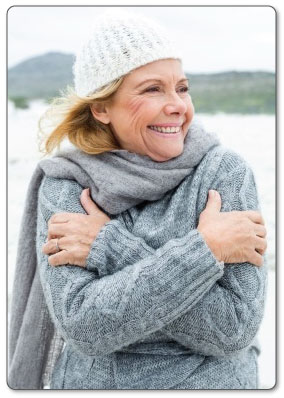 When the room becomes cooler your heart rate begins to slow down and your blood pressure increases. Your body does this automatically to retain heat in your body. At this time your soft tissue will also start to squeeze on and contract all of the veins in your body carrying blood flow. This also helps to decrease the amount of blood flowing throughout your circulatory system and retains the heat. When cold is applied to a knee injury, all of your soft tissue will squeeze on the veins to slow down your blood flow. This in turn clamps down on the amount of fluid leaking into your injured tissue, decreasing your swelling. This is why cold is used immediately to treat newer knee injuries or re-injuries. The cold slows down your body to stop the amount of damage happening to your tissue and decrease your swelling. This cold also has a nice side benefit of numbing the nerves in and around your knee injury thereby decreasing your pain. In the medical world this is something called 'Vasoconstriction'. Now, imagine the air has warmed up enough that you start sweating...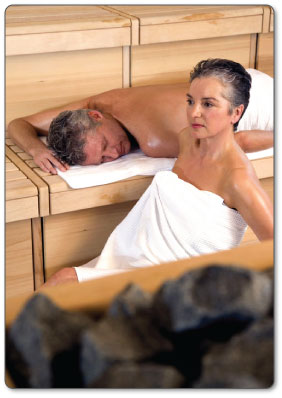 When the room becomes warmer your heart rate speeds up and your blood pressure decreases. Your body is trying to increase your blood flow to cool down your body. When heat is applied to your knee, your veins will start to get bigger (expand) to allow more blood flow through to your damaged or torn soft tissue. This in turn relaxes your knee, making the tissue more flexible and elastic. This is why heat is used on older (chronic) injuries, to loosen tissue and bring in the blood flow needed for healing. Your body will begin to heal itself after its' injured. Increasing your blood flow with heat will actually speed up this natural process. Doctors usually call this process 'Vasodilation'. Some other things happen when you're hot and cold...When you're cold you'll start to shiver and your fingers, nose and/or toes will get coldest first. This again, is your body trying to retain the heat so all major organs can still function. When you're hot you'll start to sweat. Sweating is the body's natural way of cooling itself down. Knowing when to use hot and cold and which is better for your blood flow is easy when you remember how your body reacts to cold weather vs hot weather. Both temperatures are helpful for natural injury healing when used at the right time in the healing cycle. How to Use Consistent Deep Tissue Stretching to Improve Knee Strength & HealthFor many people, the treatment won't just end there. Stretching is also an important part of tendon healing - and it's the final step needed when healing your knee injury with conservative treatment methods. You would be suprised by how many people there are that don't understand the importance of stretching a knee injury. Before returning to full activity after an injury, physical therapists prescribe gentle stretching... This is because stretching is the secret of healing any soft tissue injury. Consistent stretching is one of the only solutions available to break up scar tissue that forms on your knee as it heals. Stretching with use of a Cold Compress or Ice Pack and TShellz Wrap® is even better! Stretching your knee is |
      |

